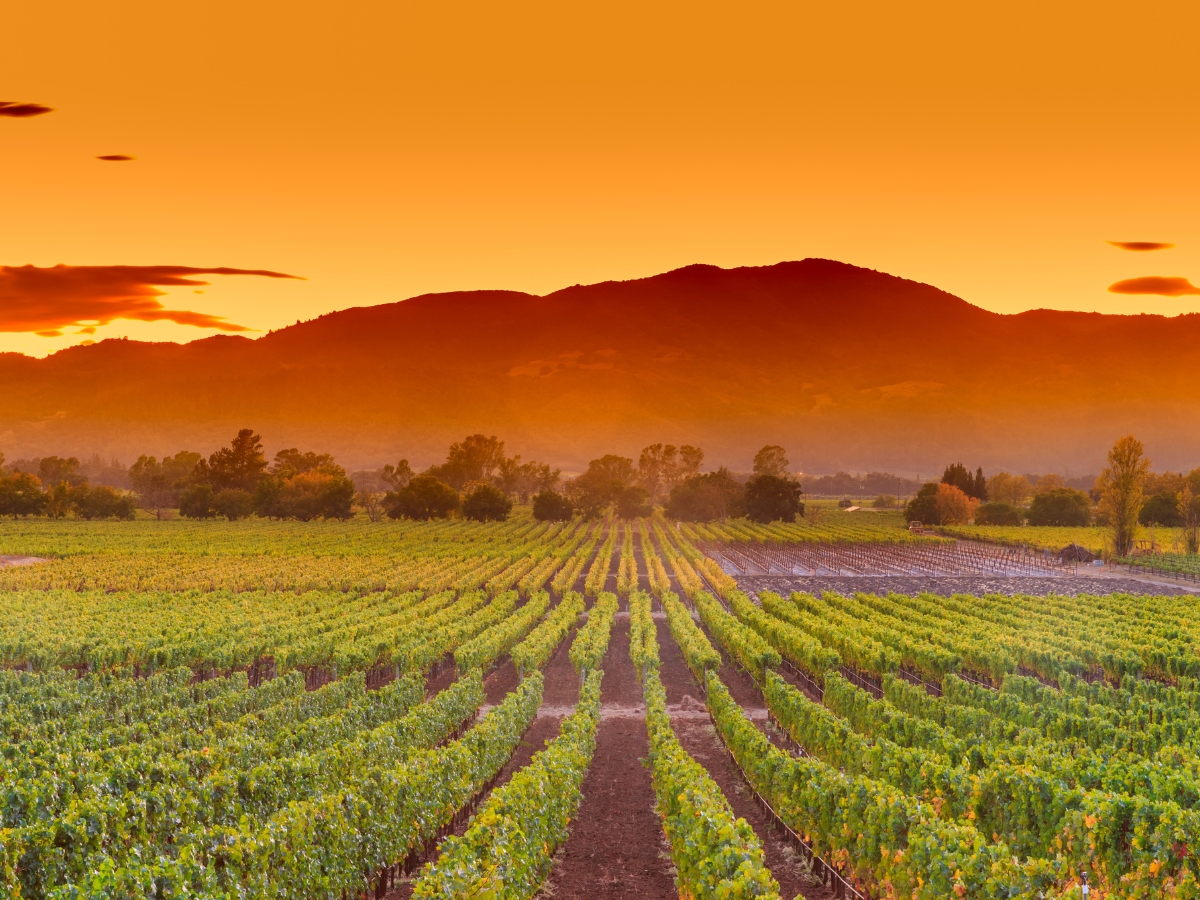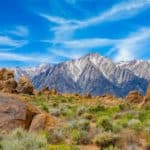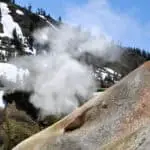The Sierra Nevadas are the fourth largest mountain range in the United States. Located between the Central Valley of California and the Great Basin, the Sierras occupy the states of California and Nevada.
Spanning some 250 miles, this impressive range forms part of the American Cordillera, which connects the three American continents: North, Central, and South. The mountains cast a shadow over the Mojave Desert, overlook multiple watersheds, and boast snow-capped peaks. They are a truly eclectic representation of the United State’s landscape.
The Sierras are hugely accessible and are surrounded by several of California’s major natural landmarks, including Lake Tahoe, Yosemite National Park, and the Giant Sequoia National Monument. Its association with the California gold rush makes it an important historical location. It’s packed full of world-class facilities and attractions, making it a hub for recreational activities year-round.
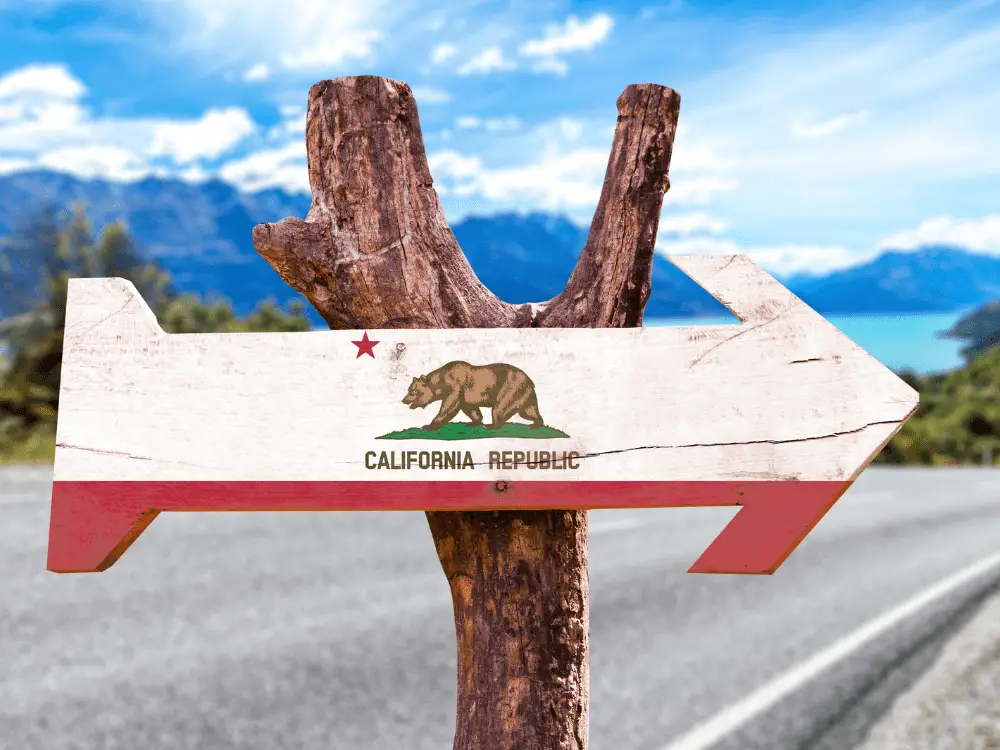
Sierra Nevada Mountains Facts
The Sierra Nevada Mountains provide some of the most stunning scenery and nature in the world. Their jagged silhouette makes for beautiful views from all angles. The Sierras’ snowpack lasts for approximately 6 months of the year. These snowy caps were the main influence behind the naming of the peaks.
The name “Sierra Nevada” comes from Spanish. It translates directly as “snowy mountains”. Juan Rodriguez Cabrillo, the Iberian-born explorer, is widely known as being the first European to enter Califonia. When he came across the Pacific mountain range, he described them bluntly as big snowy mountains.
This description was passed down to other explorers and eventually found its way onto maps.
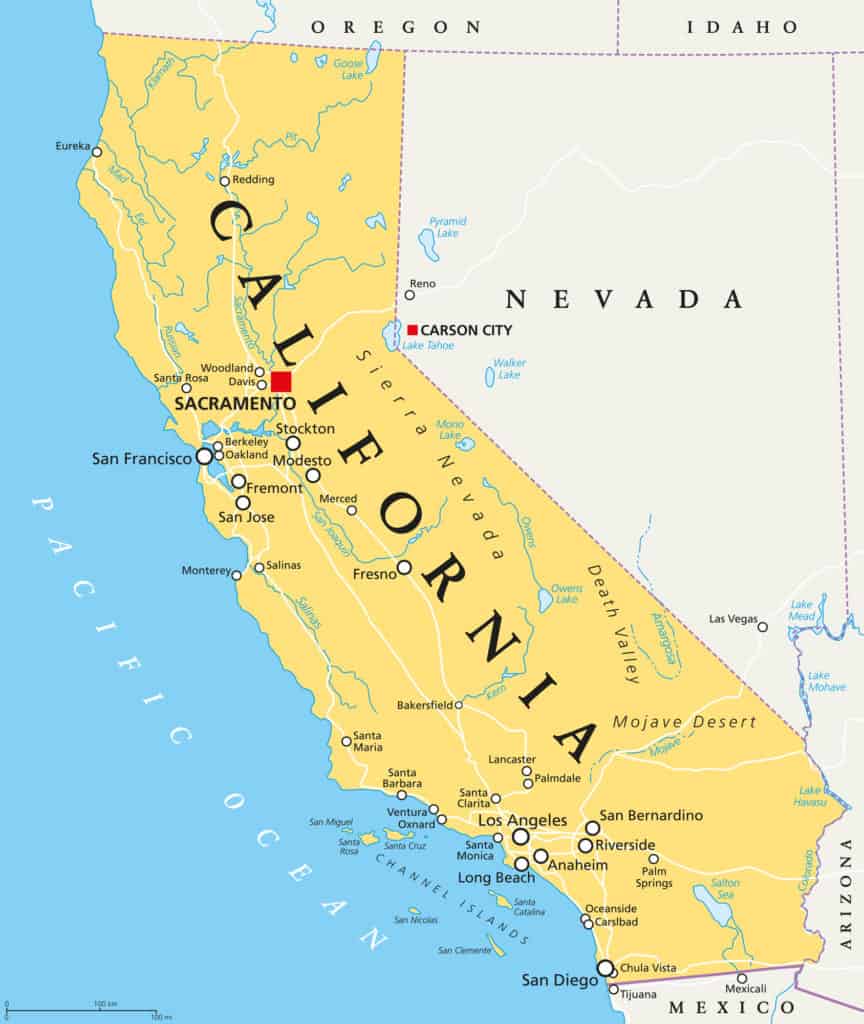
Location
The majority of the Sierras Mountains are located in California. However, the Carson Range extends into the state of Nevada. The range is known for its asymmetrical shape with flowing crests and peaks.
Most of the peaks range between 11,000 and 14,000 feet above sea level. Mount Whitney is the highest, standing around 14,494 feet. Around 23,000 mountaineers attempt to reach the summit every year.
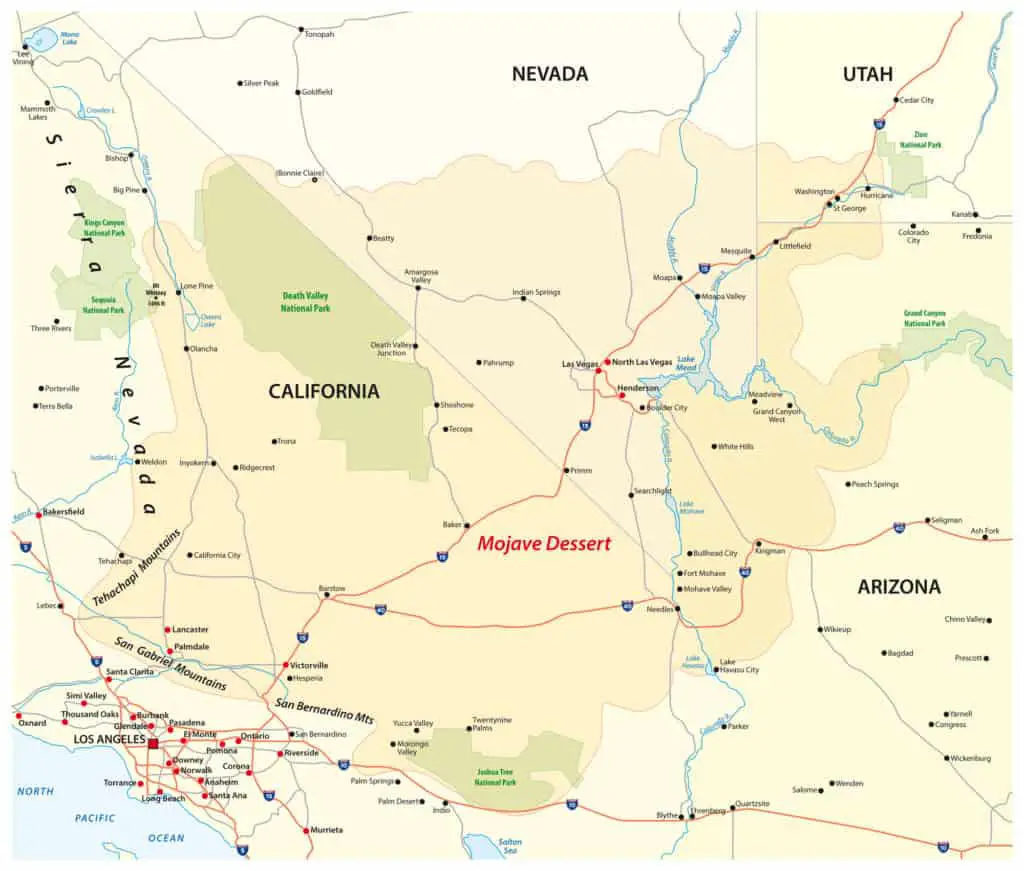
The Sierras are made up predominantly of granite or similar rock. Just north of Lake Tahoe, they integrate with volcanic rocks from the Cascades. This area is known as the Cascade-Sierra province.
Bodies Of Water
The west side of the Sierras has a narrower slope than the east and is broken up by several streams and rivers. For the most part, these pour into the Great Basin. The North section of the mountain range features some of California’s favorite rivers, including the Yuba, American, and Feather Rivers. Each of these is linked to the Sacramento River watershed.
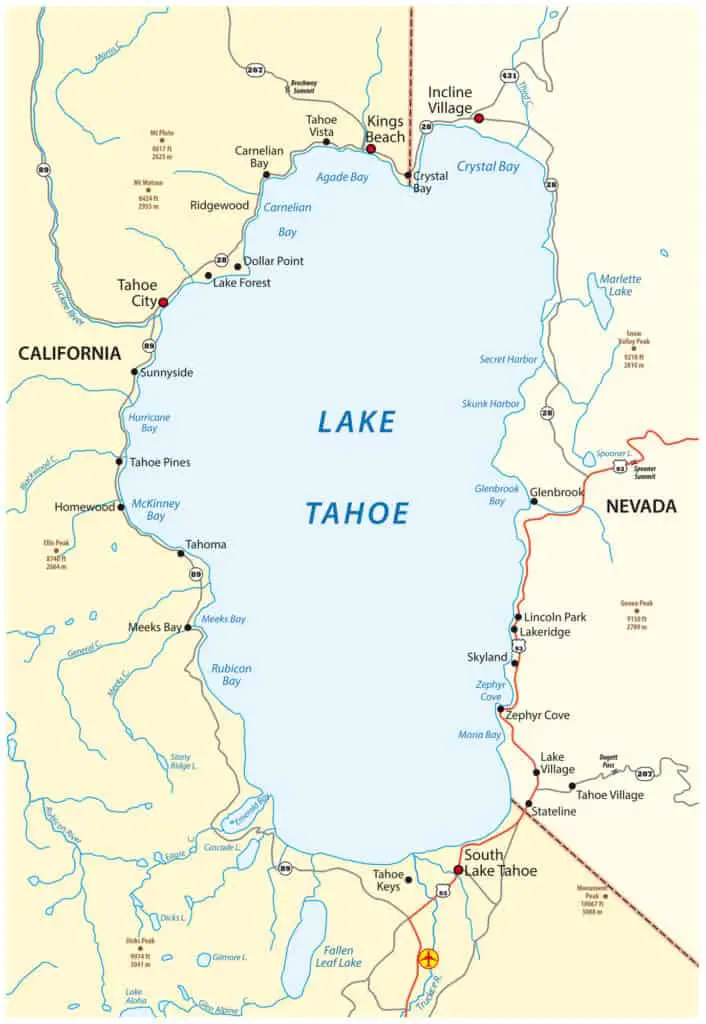
The Sierras are surrounded by important lakes from all sides. With around 60 known lakes in the vicinity, there are plenty of options during your visit. Some of the most popular lakes in the region include:
- Lake Tahoe
- Heather Lake
- Blue Lake
- Convict Lake
- Independence Lake
- Bass Lake
This mountain range is also home to the highest waterfall in the entire country. Yosemite Falls drops a staggering 2,425 feet from top to bottom. They are a must-see if you ever visit the park.
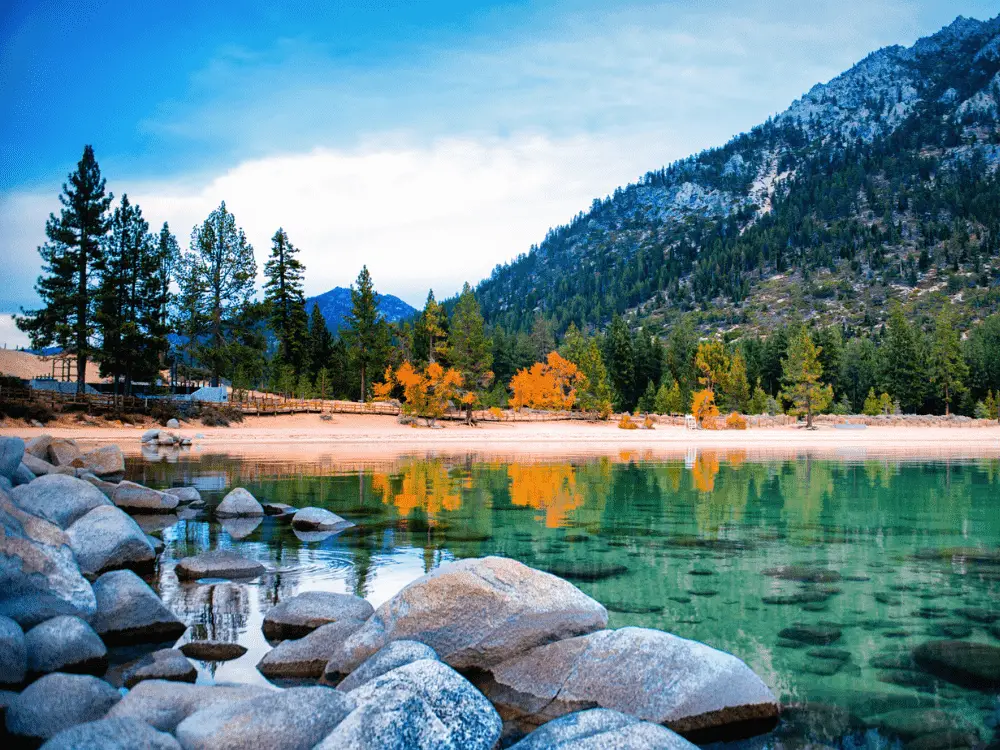
Key Landmarks
Essentially, there are endless interesting landmarks to explore in the Sierra Mountains. However, as a popular and well-visited area, you can narrow your search to a select few. Some of the most noteworthy landmarks in the Sierras are:
- Lake Tahoe
- Multiple glacial valleys, such as Hetch Hetchy Valley, Kings Kanyon, and Yosemite Valley
- Yosemite National Park and its many waterfalls, lakes, streams, and granite domes
- El Capitan
- Sequoia National Forest
- Sacramento and San Joaquin Rivers
- Palisades Tahoe
Plant Life
The diverse landscape of the Sierras yields a wide array of plant life. However, the mountainous plant life can be loosely categorized into five vegetation territories, each of which has unique greenery to offer.
In the lower sections, you can find a diverse range of deciduous trees and shrubs. There are also coves of impressive oaks along the lower ridges of the mountains. As you move into the more elevated foothills, there are black oak species, incense cedar trees, and Ponderosa pine (one of the most common trees in the area).
The Montane Forest is one of the unpredicted areas of the Sierras and is the main commercial hub for timber production. It’s home to several varieties of fir and pine species. Sequoia National Park is protected land that’s native to the giant sequoia, which is the largest species of tree in the world.
If you delve into the Subalpine Forest, there are more pine trees and the native Sierra juniper. Once you move above the tree line, low-flowering plants are widespread, as well as lichens and mosses.
The eastern shelf is far drier than the west, making for slightly different plant life. Here you’ll find pine and aspen, alongside bitterbrush, sagebrush, and juniper. On either side of the Alpines, there are many evergreens, including scrub oak, chamiso, and manzanita. The Sierras are a nature lover’s paradise.
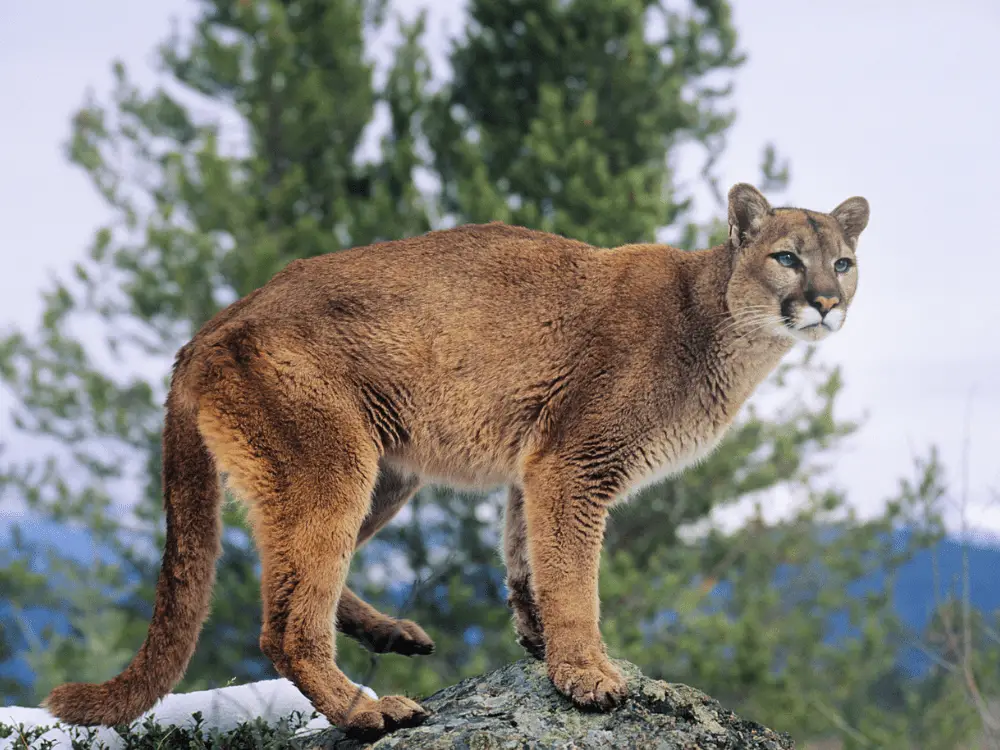
Wildlife
Hikers and explorers must be aware of mountainous wildlife wherever they are. While the Sierras are not inherently dangerous, there is plenty of wildlife to keep an eye out for. Black bears are indigenous to the area and have a relatively healthy population. They reside mainly along the western flank.
Mule deer occupy much of the foothills. Although their predator, the mountain lion, is not as prosperous as they once were, they appear to be growing in population. These cats pose a threat to hikers. Other animals that are scattered around the Sierra Nevadas include:
- Mountain sheep
- American badgers
- Striped skunks
- Bobcats
- Flying squirrels
- Golden beavers
- Wolverines
The Sierras are a dream for bird watchers. There are numerous beautiful species that can be spotted on the ground and in the skies. Pheasant, lark, quals, and roadrunners are plentiful in the foothills. Bird enthusiasts can also spot the Brewer blackbird, canyon wren, band-tailed pigeon, and white-toed woodpecker.
With so many varied bodies of water in the area, fishing is popular. Trout is the main species of fish but you may also see salmon and steelhead when they spawn.
Federal Protected Land and Conservation
In order to protect this precious section of the Pacific coast, large portions of the Sierra Nevadas are federally protected. In non-protected areas, the land is managed carefully by the U.S. Forest Service and the Bureau of Land Management.
There are three famous National Parks within the Sierras: Yosemite, Sequoia, and Kings Canyon. These are protected areas where hunting and extractive activities are prohibited. The National Parks play an important role in conservation within the region.
The protected wilderness areas keep over 15% of the Sierras (24,370 square miles) free from destructive activities like logging, mining, and drilling.
Sierra Mountains Weather and Climate
The Sierra Mountains experience relatively mild temperatures year-round, mainly due to California’s Mediterranean climate. However, they are named “snowy mountains” for a reason. Most of the major peaks experience considerable snowfall, especially in the winter months.
Summer temperatures are pleasant, making it the high season for tourism. Although, you can expect the occasional thunderstorm. The first month of the autumn is generally hot, dry, and sunny. Once October arrives, prepare for the temperatures to slowly drop and precipitation levels to gradually increase. Annual precipitation typically lies between 20 and 80 inches.
As with many mountainous terrains, weather in the Sierras can be unpredictable. If you’re planning a trip, be sure to check the forecast. The weather has a significant influence over what you can and can’t do.
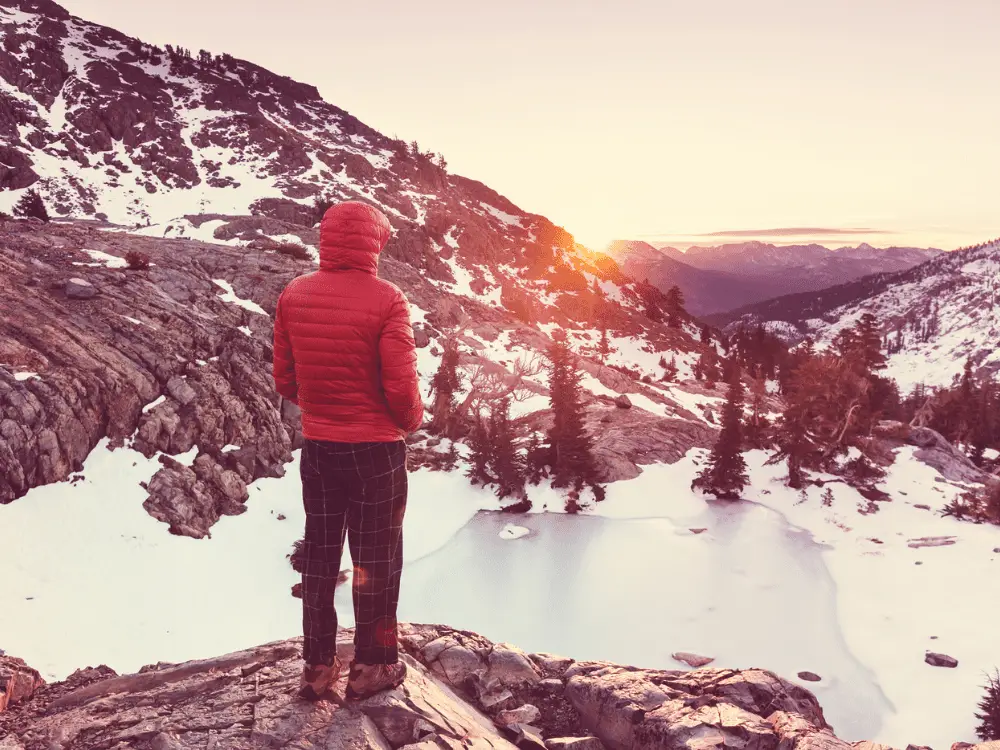
Things To Do In The Sierra Mountains
The Sierra Nevadas are a hive for recreational activities. Their proximity to some of California’s major cities means they are easily accessible by several highways. There are many amazing recreational facilities scattered throughout the mountain range, where visitors enjoy camping, hiking, watersports, and culinary adventures.
Hiking
One of the most attractive aspects of the Sierras for hikers is the vast array of landscapes they have to offer. In a single day of hiking, you can pass a variety of terrains, several beautiful lakes, waterfalls, and forests. There are countless options suitable for hikers of all experience levels.
There are literally thousands of hiking trails through and around the mountains. You can cover 800 miles of trails in Yosemite National Park alone. For beginners, the trail to Bridalveil Falls is an excellent option. The half-mile hike is straightforward and the reward is a breathtaking view of the misty waterfall, which drops over 600 feet.
If you’re a little more experienced, consider tackling the famous Half Dome. This is a challenging trail that spans 14 miles (round trip).
To get the most out of this hike, you’ll need to ascend a 400-foot rock face. But don’t worry, there are cables to help you get there. From here, you can enjoy a well-earned rest and a spectacular view of the mountains.
The High Sierra Loop is another popular hike that showcases the best Yosemite has to offer. It’s a tough trail that requires a full day of walking and climbing. It’s also important to account for significant elevation gain (over 3,000 feet). However, the views and highlights are worth the effort.
The Sequoia, Kings Canyon, and Sierra National Forest Parks provide thousands of miles of trails. Again, these regions are packed full of nature, wildlife, and dazzling views.
There are also a number of long-hike options that take weeks to finish. For example, the legendary John Muir Trail starts in Yosemite and ends at Mount Whitney peak. This marks the end of a 215-mile trek that takes experienced hikers around a month to complete.
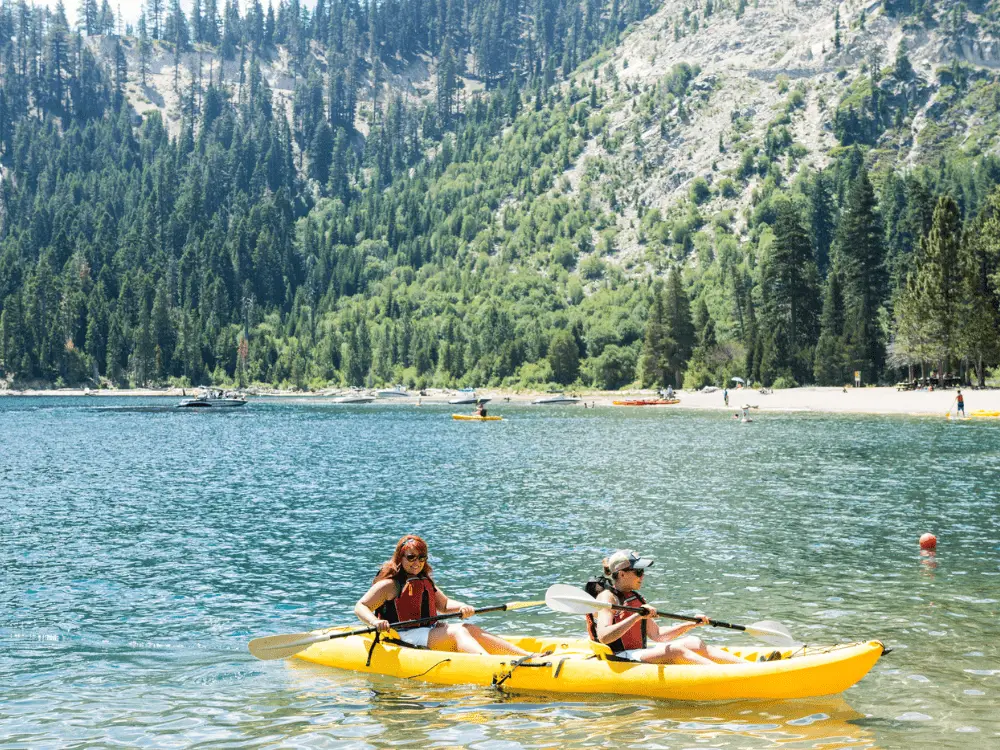
Lake Activities
With lakes and rivers aplenty, the Sierras are a hotspot for water-based activities. These lakes are fed mainly by clean mountain streams, providing crystal clear, pristine water. The vast majority of Sierra Nevada’s lakes are safe for swimming. They are a popular destination for families and outdoor enthusiasts.
Aside from swimming, one of the most popular lake activities is kayaking. Many tour companies offer guided kayaking trips through the likes of the Sardine and Salmon Lakes. Depending on the time of year, you may be able to explore the Stampede Reservoir or the hidden waterfall next to Sardine Lake.
Sailing charters provide exciting family adventures, taking you across Lake Tahoe. You can even enjoy the summer sunset from the boat deck.
Many of the popular trails near the Salmon and Sardine Lakes have rock jumping spots. However, it’s important to exercise extreme caution if you decide to take the leap. Check the water depth and don’t take unnecessary risks.
Lakes in the upper Sierras are open for fishing year-round. Trout is the main species. While they are native to the region, there are also plenty of stock lakes to choose from. The Sierra Nevada stream fishing season lasts from April to November.
If you’re after a more relaxing Sierra trip, consider one of the many luxurious waterfront lodgings. Lake Tahoe, in particular, has some beautiful hotels to stay in.
Rock Climbing
Naturally, the climate and variety of peaks make the Sierras an ideal place to climb for amateurs and seasoned pros. The tough granite rock is favored among traditional climbers, providing stable climbing routes.
The Sierras offer many highly technical spots that take several trips to master. Coincidingly, there are hundreds of straightforward paths for first-timers and beginner climbers.
Yosemite is undoubtedly the go-to for elite-level climbers. In addition to the world-class routes, El Capitan and other Yosemite rock faces have been featured in multiple documentary films, like Dawn Wall and Free Solo.
These have given the Yosemite peaks even more luster for climbers and tourists.
Some of the most notable rock climbing sections of the Sierras are:
- Bishop’s Big Backyard
- The Needles
- Shuteye Ridge
- Mount Whitney
- The Incredible Hulk
- Mount Humphreys
Food and Beverages
It’s fair to say that the Sierras have a little bit of everything. There is no shortage of exciting activities and stunning views for thrill-seekers and families alike. One of the many added extras that the Sierras offer is the food and beverage scene.
The historic towns are charming weekend destinations where you can eat from a selection of great restaurants across a range of budgets. The High Sierras are known for serving award-winning food. If you have a sweet tooth, be sure to check out Lila and Sage Cupcakes (Murphys) and Eric Schat’s Bakery and Sandwich Bar (Bishop).
Wine tasting is an underrated attraction in the Sierras. It’s a beautiful setting for trying authentic regional products.
Some would argue that the Sierra Nevadas are the home of craft beers. While most are aware of the “Sierra Nevada Brewing Company”, many don’t realize the number of first-rate breweries in that section of the state.
Award-winning breweries are perhaps the best places to break up an activity-based trip. After all, it’s important to explore your tastebuds and find your favorite artisanal beverages. After a hard day’s hiking, here are the best breweries to sample:
- Snowshoe Brewing
- Mammoth Brewing
- FiftyFifty Brewing Company
- South Lake Brewing Company
- Indian Wells Brewing Company
References
- https://www.britannica.com/place/Sierra-Nevada-mountains/The-people-and-economy
- https://sierramountainpasses.com/about-the-sierra-nevada-passes/weather/
- https://www.fs.fed.us/psw/publications/documents/psw_gtr272/psw_gtr272_013.pdf



